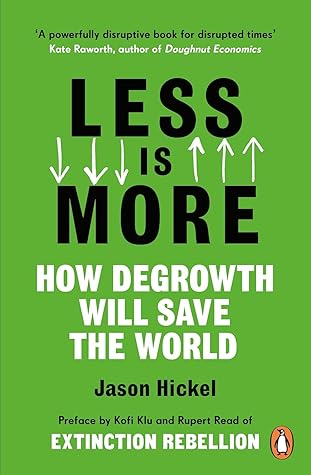More on this book
Community
Kindle Notes & Highlights
by
Jason Hickel
Read between
August 7 - August 20, 2023
This is called ‘degrowth’ – a planned reduction of excess energy and resource use to bring the economy back into balance with the living world in a safe, just and equitable way.
Margaret T liked this
the emergence of the extraordinary productive capacity that characterises capitalism depended on creating and maintaining conditions of artificial scarcity. Scarcity – and the threat of hunger – served as the engine of capitalist growth. The scarcity was artificial in the sense that there was no actual deficit of resources: all the same land and forests and waters remained, just as they always had, but people’s access to them was suddenly restricted. Scarcity was created, then, in the very process of elite accumulation. And it was enforced by state violence, with peasants massacred wherever
...more
there is an inverse relation between what he called ‘private riches’ and ‘public wealth’, or commons, such that an increase in the former can only ever come at the expense of the latter.
The United States is single-handedly responsible for no less than 40% of global overshoot emissions. The European Union is responsible for 29%. Together with the rest of Europe, plus Canada, Japan and Australia, the nations of the global North (which represent only 19% of the global population) have contributed 92% of overshoot emissions. That means they are responsible for 92% of the damage caused by climate breakdown. By contrast, the entire continents of Latin America, Africa and the Middle East have contributed a combined total of only 8%. And that comes from only a small number of
...more
The South has suffered twice over: first from the appropriation of resources and labour that fuelled the North’s industrial rise, and now from the appropriation of atmospheric commons by the North’s industrial emissions.


